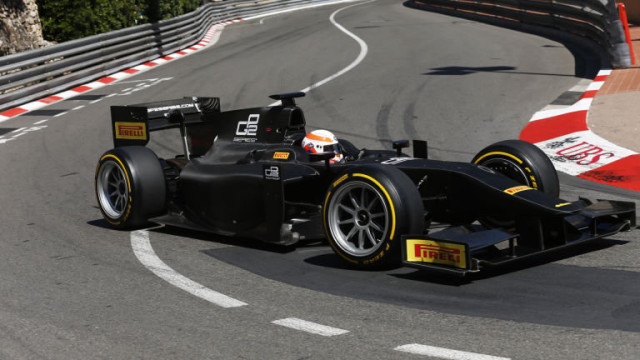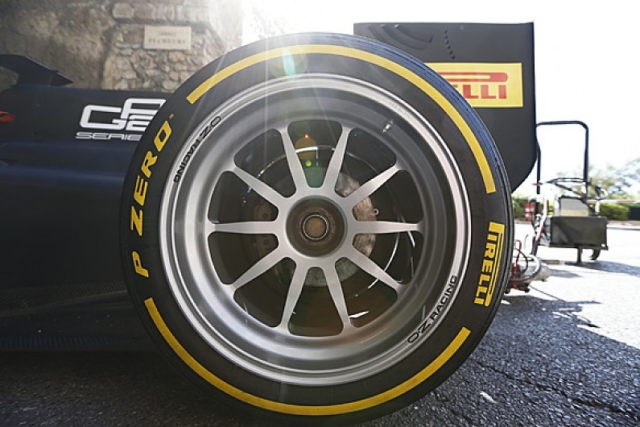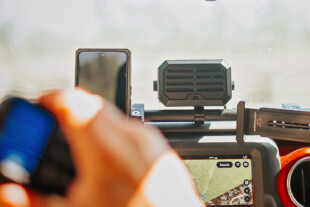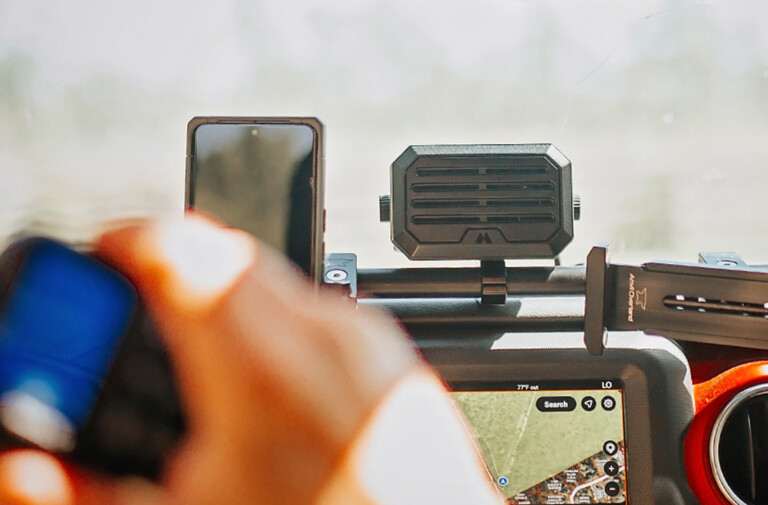The sensible, level-headed Martin Brundle gets another shot in a modern single seater, but this time, using an experimental and slightly-controversial set of 18 inch wheels on a GP2 car. Modern formula cars (excluding Formula E) don’t use big wheels like this, and there’s been talk of changing them to suit the times. Additionally, no road cars use 13″ wheels like they do in F1, and if LeMans cars use bigger wheels, shouldn’t all of the top-tier categories? Regardless of the answer, the proposition raises several interesting points concerning the ways the suspension, tires, and brakes would be affected.
It’s a complicated question, surely, though some signs point towards yes. The main benefit of larger rims and the necessary smaller sidewalls is more control over tire deflection, though sometimes a bit of sidewall flex is not such a bad thing – in the rain, for instance. Watching any F1 car bounce over the curbs in slow motion, and the tire resembles a jello in the middle of an earthquake. This means the suspension would have to be responsible for more of the damping, since the mushy current tires are responsible for a good deal of that.

Since GP2 cars don’t use tire warmers, Brundle had to go out and warm the tires before getting one hot lap.
Commercially, it better correlates with the standard size of sports car rims these days. Cosmetically, it looks appealing and could help improve the look of modern cars – something which is desperately needed. It could, potentially, allow for better braking with more room for the rotor and caliper as well as more area for airflow and brake cooling. However, how much better could and should F1 brakes be?
The downsides of this approach would be predominantly financial, though to what extent is uncertain. Redesigning the rim would require new tire technology and a development of a suspension system to complement the new sizing. However, the reality of the matter is that suspension designers can likely redesign the suspension with some simplicity. What’s most important is that the suspension would have to be softer to accommodate for the stiffer sidewalls. Additionally, larger wheels would weigh more.
Paul Hembery, Pirelli’s motorsports director noted “Such are the lateral loads being passed from the tread into the wheel via the sidewalls, that geometry of very short sidewalls will make them want to pull off the rim in turns.” That sounds like a relaxing experience.

More area within the wheel would also allow for better brake cooling – but the proximity of the rotor to the wheel is one way of tuning tire temperatures. Having this increased area would limit the ability to tune tire temperatures.
Ultimately, it’s a mixed bag, since the cornering forces F1 tires are subjected to are higher than those experienced by cars in other categories, including WEC, where a smaller sidewall might not be as disadvantageous. Practically, as Brundle pointed out, these larger rims obscure the driver’s ability to place the open wheel car effectively, which is all-important.
While many find the larger rims nicer on the eyes, they might not be the best compromise when it comes to cooling and weight. Like most innovations in F1 these days, it ultimately comes down to economics, and it’s unlikely Pirelli will want to spend the necessary money for a completely new tire design. What do you think? Should F1 retain the current format and focus on other aspects of the tire – namely width? Should the cosmetics of an F1 car come first? They’re all tricky questions, but ultimately, if the fans care, it counts for something.





















